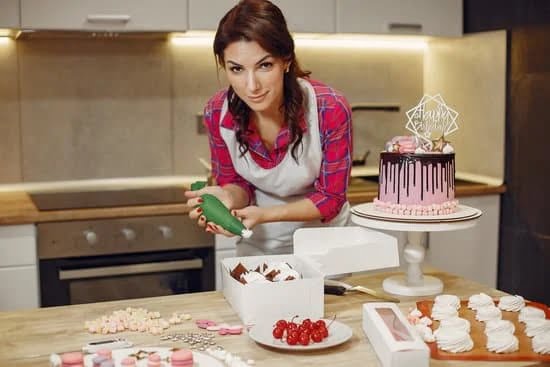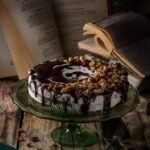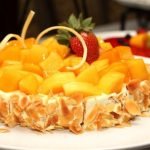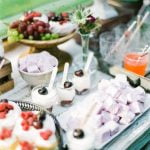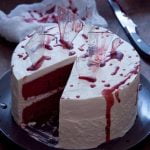Looking to learn how to bake cake and decorate it? Baking and decorating a cake can be a fun and rewarding activity that allows for creativity and personalization. From selecting the perfect flavor combinations to adding personalized touches, the process of creating a beautiful and delicious cake can be a satisfying endeavor.
In this article, we will explore the step-by-step process of baking and decorating a cake, from gathering ingredients to troubleshooting common issues. Whether you are a beginner or an experienced baker, there’s always something new to learn in the world of cake baking and decorating.
Baking and decorating a cake starts with gathering the right ingredients, followed by the baking process itself. While it may seem intimidating at first, with the right tools and techniques, anyone can achieve professional-looking results.
Decorating a cake is also an art form in itself; from choosing the right flavors to mastering various decorating techniques such as piping and frosting, there are endless opportunities for creativity. In addition to providing instructions on how to bake and decorate a cake, this article will also offer tips on customizing cakes for different occasions and themes.
Whether you’re looking to impress your friends with a beautifully decorated birthday cake or simply want to try your hand at something new, learning how to bake and decorate a cake can be an enjoyable experience. With dedication, creativity, and attention to detail, you can create a delicious masterpiece that is sure to delight both the eyes and taste buds of those who partake in it.
So let’s roll up our sleeves and dive into the exciting world of baking and decorating cakes.
Gathering Ingredients
One of the first steps in baking a delicious cake is gathering all the necessary ingredients. To bake a cake, you will need flour, sugar, eggs, butter or oil, leavening agents such as baking powder or baking soda, and flavorings such as vanilla extract.
It is important to have the right measurements for each ingredient to ensure that the cake turns out just right. For example, a typical cake recipe may call for 2 cups of flour, 1 cup of sugar, 3 eggs, and so on.
It’s also important to consider any dietary restrictions when gathering ingredients for your cake. For individuals who are gluten-free or vegan, there are alternative ingredients available that can be used in place of traditional flour, eggs, and dairy products.
For example, almond flour or coconut flour can be used as a substitute for regular flour, while applesauce or mashed bananas can replace eggs in vegan recipes. It’s essential to carefully read through ingredient labels and research suitable alternatives to accommodate different dietary needs.
In addition to the basic ingredients for the cake batter, don’t forget about the ingredients needed for the frosting and any additional fillings or toppings. Depending on the flavor profile you want to achieve with your cake, you may need additional items such as cocoa powder for chocolate cakes, fresh fruits for fillings and garnishes, and food coloring for decorative elements.
Taking stock of all these details during the ingredient gathering process will ensure that you have everything you need before beginning your baking and decorating journey.
| Ingredient | Measurement | Dietary Alternative |
|---|---|---|
| Flour | 2 cups | Almond flour (gluten-free) |
| Sugar | 1 cup | Stevia (sugar-free) |
| Eggs | 3 eggs | Mashed bananas (vegan) |
Baking the Cake
Baking a delicious cake can be a rewarding and fun activity, whether it’s for a special occasion or just to satisfy a sweet craving. The process of baking a cake involves more than just mixing ingredients together and popping it in the oven.
To achieve the perfect texture and flavor, it’s essential to follow the right steps and use the proper techniques. In this section, we will provide step-by-step instructions on how to bake a cake, along with some tips and tricks to help you achieve that mouthwatering result.
First and foremost, gather all the necessary ingredients as listed in the previous section. Preheat your oven to the specified temperature according to your recipe. Grease and flour your cake pans or line them with parchment paper for easy removal of the cakes later. It’s important to prepare your pans properly to prevent the cake from sticking.
Next, combine all your dry ingredients in a separate bowl – this usually includes flour, sugar, baking powder/soda, and salt. In another bowl, mix together your wet ingredients such as eggs, milk, oil or butter, and vanilla extract. Gradually add the dry mixture into the wet mixture while stirring continuously until well combined.
Once you have achieved a smooth batter without any lumps, carefully pour it into your prepared cake pans. Make sure that the batter is evenly spread out in each pan to ensure even baking. Place the pans in the preheated oven and set a timer based on your recipe’s recommended baking time.
| Baking Tips | Tricks for Perfect Cakes |
|---|---|
| Preheat oven properly | Check doneness with toothpick before removing from oven |
| Mix dry ingredients separately | Add coffee for depth of flavor |
| Evenly spread batter in pans | Use room temperature wet ingredients for better emulsification |
By following these step-by-step guidelines and incorporating these helpful tips, you will be well on your way to baking a delicious cake with amazing texture and flavor.
Decorating Tools and Supplies
When it comes to decorating a cake, having the right tools and supplies is essential for achieving professional-looking results. Here is a comprehensive guide to the essential tools and supplies needed for decorating a cake:
Piping Bags
Piping bags are an absolute must-have for cake decorating. They come in various sizes and materials, such as disposable plastic or reusable cloth. Piping bags allow you to create intricate designs and add fine details to your cake using different types of frosting.
Spatulas
Spatulas are versatile tools that come in different shapes and sizes, such as offset spatulas and straight spatulas. These tools are used for spreading frosting smoothly onto the cake layers, as well as for creating textured designs on the surface of the frosting.
Decorating Tips
Decorating tips, also known as piping tips, are small metal nozzles that can be attached to piping bags. They come in various shapes and sizes, allowing you to create different patterns and designs with icing. From stars and rosettes to leaves and shells, having a variety of decorating tips will enable you to get creative with your cake decorations.
In addition to these basic tools, other supplies such as fondant smoothers, modeling tools, edible decorations, and food coloring gels can also enhance your cake decorating experience. Having these essential tools and supplies on hand will ensure that you are well-equipped to try out different decorating techniques and achieve professional-looking results when baking a beautiful cake.
Decorating Techniques
Decorating a cake is where you can really let your creativity shine. There are various techniques that can be used to add unique and beautiful designs to a cake, such as piping, frosting, and fondant. Each technique offers its own advantages and allows for different levels of customization. Whether you’re a beginner or an experienced baker, mastering these decorating techniques can take your cakes to the next level.
Piping
Piping is a popular decorating technique that involves using a piping bag and different tips to create intricate designs on the surface of the cake. It allows for precise control over the design and is often used for creating flower petals, borders, and lettering. By practicing different pressure and hand movements, you can achieve various effects with piping, from simple lines to elaborate floral arrangements.
Frosting
Frosting is perhaps the most common technique used to decorate cakes. It involves applying a smooth or textured layer of frosting on the cake’s surface using a spatula or knife. Frosting allows for creative freedom in terms of colors, textures, and patterns. You can create smooth finishes with buttercream frosting or experiment with different textures using whipped cream or cream cheese frosting.
Fondant
Fondant is a versatile sugar-based paste that can be rolled out and draped over cakes to create a smooth, polished finish. It can also be molded into various shapes or used to cover individual decorations like flowers or figurines. Fondant provides a blank canvas for intricate designs and 3D effects. With the use of edible food coloring and sculpting tools, you can achieve stunning visual results with fondant.
Mastering these decorating techniques may take time and practice, but with dedication and patience anyone can learn how to bake a cake And decorate it beautifully. The key is experimentation – don’t be afraid to try new things and push your creative boundaries. With these skills in your baking arsenal, you’ll be able to impress friends and family with delicious treats that look just as good as they taste.
Choosing the Right Flavors
When it comes to baking a cake, choosing the right flavors for both the cake and the frosting is crucial in creating a delicious and memorable dessert. The flavor combinations can greatly enhance the overall taste and appeal of the cake, making it a hit with friends and family. There are various traditional flavor options such as vanilla, chocolate, or red velvet, but there are also unique and unconventional options to explore.
One tip for selecting the perfect flavor combination is to consider the occasion for which the cake is being baked. For example, if it’s for a birthday celebration, bright and fun flavors like lemon or strawberry could be a great choice.
For a more formal event like a wedding, elegant flavors such as lavender or champagne might be more fitting. Considering the theme or purpose of the cake can guide you in choosing the right flavors that will delight your guests.
Another important aspect of selecting flavor combinations is to ensure that they complement each other. If you’re using a rich and decadent chocolate cake, pairing it with a light and fluffy raspberry frosting could create an enjoyable contrast in taste and texture. It’s also essential to consider how the flavors will interact with each other when combined – you want them to harmonize rather than compete with one another.
In addition to traditional flavors, don’t shy away from exploring unique and unconventional options. Think outside the box by incorporating unexpected ingredients like lavender, cardamom, or even tropical fruits into your cakes and frostings. These creative combinations can result in delightful surprises and make your homemade creations stand out. Ultimately, experimenting with different flavor profiles can lead to exciting discoveries and elevate your baking game to new heights.
Adding Personal Touches
When it comes to baking and decorating a cake, one of the most exciting parts is adding your personal touches to make it truly unique and special for the occasion. Whether it’s a birthday, wedding, or holiday celebration, there are endless creative ideas for personalizing and customizing a cake to suit any theme or event.
From choosing the right colors and decorations to incorporating specific elements that reflect the purpose of the celebration, adding personal touches to a cake can elevate the entire experience for both the baker and the recipient.
Theme-Inspired Decorations
For birthdays, consider incorporating the recipient’s favorite hobbies, interests, or characters into the cake design. For example, if they love music, you can decorate the cake with musical notes or instruments. If they are passionate about sports, you can create a cake shaped like a basketball or soccer ball.
Similarly, for weddings, you can match the cake design with the theme of the wedding – whether it’s rustic, modern, elegant, or whimsical. Holidays provide even more opportunities for creativity with themed decorations such as hearts for Valentine’s Day or pumpkins for Halloween.
Personalized Toppers and Messages
A simple yet effective way to personalize a cake is by adding customized cake toppers or messages. Whether it’s a name plaque for a birthday cake or a romantic message for a wedding cake, these small details can make a big impact. Personalized toppers could be handmade using fondant or edible paper, featuring initials, names, dates, or even fun quotes that capture the essence of the celebration.
Special Flavors and Fillings
In addition to visual customization, experimenting with unique flavors and fillings can add an extra layer of personalization to a cake. Consider incorporating unconventional ingredients such as lavender-infused sponge cakes for an elegant touch at a bridal shower or tropical fruit fillings for a summer-themed birthday party. By thinking outside the box when it comes to flavor combinations, you can surprise and delight your guests while making your cake truly stand out.
By implementing these creative ideas for adding personal touches to your baked masterpiece, you can ensure that every cake you bake becomes not just delicious but also an unforgettable centerpiece that perfectly captures the spirit of every occasion. Whether it’s through theme-inspired decorations, personalized toppers and messages, or special flavors and fillings – there are endless ways to infuse your own creativity into each creation.
Troubleshooting
Baking and decorating a cake can be a fun and rewarding experience, but it’s not without its challenges. From cakes that don’t rise to frosting that’s too runny, there are several common issues and mistakes that can arise during the baking and decorating process. In this section, we’ll discuss some of these challenges and provide solutions to help ensure a successful outcome every time you bake and decorate a cake.
One common issue when baking a cake is that it doesn’t rise properly. This can be due to various factors such as using expired leavening agents, overmixing the batter, or opening the oven door too soon during baking.
To prevent this from happening, make sure your ingredients are fresh, mix the batter just until everything is combined, and avoid opening the oven door until the cake is almost fully baked. Additionally, ensuring your oven is at the right temperature before placing the cake inside can also help with achieving a perfectly risen cake.
Another challenge when decorating a cake is getting the frosting to spread smoothly and evenly. If your frosting is too stiff, try adding a small amount of milk or cream to loosen it up. On the other hand, if it’s too runny, add more powdered sugar to thicken it. Using a rotating cake stand and an offset spatula can also help with achieving smooth and even frosting application.
For those new to baking and decorating cakes, it’s important to remember that practice makes perfect. Don’t be discouraged by any mistakes or mishaps along the way – instead, use them as learning experiences to improve your skills. With time, patience, and the right techniques, you’ll soon be baking and decorating beautiful cakes like a pro.
Conclusion
In conclusion, baking and decorating a cake can be a delightful and fulfilling experience. From gathering ingredients to mastering various decorating techniques, the process of creating a beautiful and delicious cake offers a sense of accomplishment and creative satisfaction. By following the step-by-step instructions provided in this article, you can successfully bake a cake that not only tastes delicious but also looks visually stunning.
One of the most important aspects of baking and decorating a cake is to have fun and let your creativity run wild. Experiment with different flavors, colors, and designs to create a unique masterpiece that reflects your personal style and taste. Whether it’s for a special occasion or just for the joy of baking, the process of creating a cake from scratch can be incredibly rewarding.
So, if you’ve been hesitant to try your hand at baking and decorating a cake, now is the perfect time to dive in. With the comprehensive guide provided in this article, along with tips on troubleshooting common issues, you have all the resources you need to embark on your cake-making journey.
Don’t be afraid to make mistakes along the way – after all, it’s all part of the learning process. So go ahead, unleash your inner baker and decorator, and enjoy the wonderful world of creating your own delicious cakes.
Frequently Asked Questions
What Do I Need to Bake a Cake and Decorate It?
To bake a cake and decorate it, you will need basic ingredients like flour, sugar, eggs, butter, baking powder, and flavorings. Additionally, you will need frosting or icing to decorate the cake, as well as any edible decorations like sprinkles or fondant.
Can I Bake a Cake and Decorate It the Same Day?
Yes, you can bake a cake and decorate it on the same day. Once the cake has cooled completely, you can start decorating it with frosting, icing, or any other decorative elements of your choice. Just make sure the cake is not warm when you start decorating.
How Do You Prepare a Cake Before Decorating?
Before decorating a cake, it’s essential to ensure that the cake is completely cooled. This prevents the frosting from melting onto the cake. You can also level the top of the cake if needed to create a smooth surface for decorating. Once done, you can apply a thin layer of frosting as a base before adding more decorative elements.

Welcome to our cake decorating blog! My name is Destiny Flores, and I am the proud owner of a cake decorating business named Cake Karma. Our mission is to provide delicious, beautiful cakes for all occasions. We specialize in creating custom cakes that are tailored specifically to each customer’s individual needs and tastes.

